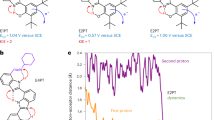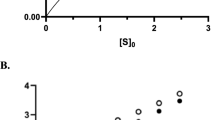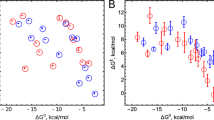Abstract
IN recent years there have been some needless controversies1 about the use of the term “high energy bond” in biochemistry. We imagine that most biochemists are perfectly aware that, when they speak of the “high energy bonds” in ATP, they do not imply that there is something exceptional about the P-O-P linkages; they mean that ATP is a compound that reacts (enzymically) with other compounds in biochemical systems, the net result being the formation of products with a lower free energy content. Some of the free energy released may be utilized in various ways but a certain fraction (usually about 25%) is dissipated as heat, and thus the reaction is virtually irreversible, whether it is anabolic or catabolic. Such irreversibility conferred by heat loss is the basis of the steady state we call “life”. No one supposes that the P-O-P (anhydride) bonds enshrine the chemical potential in ATP, but Lipmann's term “high energy bond” remains a useful metaphor for at least two reasons. First, the phosphate group can be readily attached to all kinds of biochemical compounds and is therefore an excellent intermediary in linking one reaction with another. Secondly, the free energy of hydrolysis of the P-O-P anhydride bond at pH 7 is relatively high. Thus a reaction such as  with an equilibrium lying to the left can be reversed by coupling it enzymically with ATP hydrolysis:
with an equilibrium lying to the left can be reversed by coupling it enzymically with ATP hydrolysis:  in which the equilibrium is to the right.
in which the equilibrium is to the right.
This is a preview of subscription content, access via your institution
Access options
Subscribe to this journal
Receive 51 print issues and online access
$199.00 per year
only $3.90 per issue
Buy this article
- Purchase on Springer Link
- Instant access to full article PDF
Prices may be subject to local taxes which are calculated during checkout
Similar content being viewed by others
References
Banks, B. E. C., and Vernon, C. A., J. Theor. Biol., 29, 301 (1970).
Benemann, J. R., and Valentine, R. C., Adv. Microbiol. Physiol., 5, 135 (1971).
Chance, B., J. Biol. Chem., 236, 1544 (1961).
Chance, B., J. Biol. Chem., 236, 1569 (1961).
Chance, B., and Hollunger, G., J. Biol. Chem., 236, 1534 (1961).
Chance, B., and Hollunger, G., J. Biol. Chem., 236, 1555 (1961).
Chance, B., and Hollunger, G., J. Biol. Chem., 236, 1562 (1961).
Chance, B., and Hollunger, G., J. Biol. Chem., 236, 1577 (1961).
Aleem, M. I. H., Lees, H., and Nicholas, D. J. D., Nature, 200, 759 (1963).
Author information
Authors and Affiliations
Rights and permissions
About this article
Cite this article
CHANCE, B., LEES, H. & POSTGATE, J. The Meaning of “Reversed Electron Flow” and “High Energy Electron” in Biochemistry. Nature 238, 330–331 (1972). https://doi.org/10.1038/238330a0
Received:
Issue Date:
DOI: https://doi.org/10.1038/238330a0
This article is cited by
-
Nitrogen fixation by Anabaena cylindrica
Archives of Microbiology (1974)
Comments
By submitting a comment you agree to abide by our Terms and Community Guidelines. If you find something abusive or that does not comply with our terms or guidelines please flag it as inappropriate.



